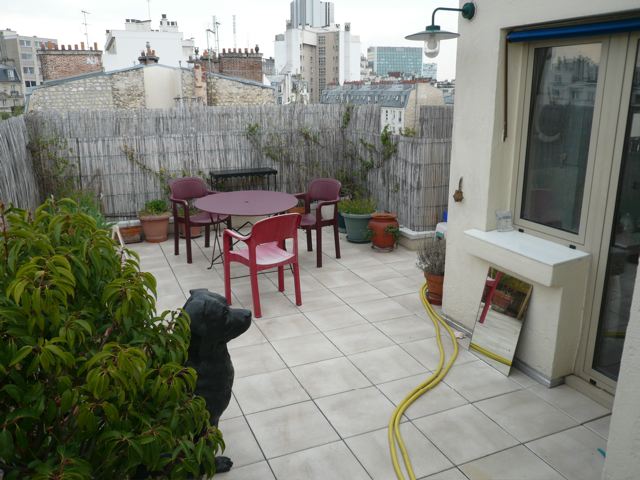
A total of 57,000 bills of this sort were issued in 1767, 1770 and 1774. The dent in the upper left corner was deliberate: 'indented' bills were used to fight against counterfeiting, which was rampant at the time. Another trick was inserting deliberate typos, like the colon after "Annapolis". Note also that this note is hand-signed, with a hand-written serial number. Back then, being treasurer must have involved a lot of manual labor!
You might argue that the 2/9 dollar bill was even odder...
... but I'd have to disagree: I think it's oddly evener!
I thank Robert Schlesinger for tipping me off about the existence of these odd fractional bills. The above pictures come from the following delightful history, where you can also see a 4 dollar bill, a 6 dollar bill, a 1/3 dollar bill, and so on:
But: why did they make a 1/9 dollar bill? To answer this, look carefully at the bills above and see how much British money a dollar was worth. Then calculate how many pence a dollar was worth. Here this table of old British currency may come in handy:
Gold coins:You'll then see why one ninth of a dollar was a reasonable amount of money!
Five-sovereign piece, equal to five pounds.
Two-sovereign piece, equal to two pounds.
One-sovereign piece, equal to one pound.
Half-sovereign piece, equal to half-a-pound.Silver coins:
A crown, or five-shilling piece, equal to one fourth of a sovereign.
Double-florin, or four-shilling piece, equal to one-fifth of a sovereign.
Half-a-crown, or two shillings and sixpence, equal to one-eighth of a sovereign.
Florin, or two-shilling piece, equal to onetenth of a sovereign.
Shilling piece, equal to one-twentieth of a sovereign.
Sixpenny piece, one-half of a shilling.
Threepenny piece, one-half of a sixpence.Bronze coins:
Penny, equal to one-twelfth of a shilling.
Halfpenny, equal to one-half of a penny.
Farthing, one-fourth of a penny.
not counting this joke bill they've started cranking out to put an end to the current economic crisis:

or this sadly real one issued by Zimbabwe:
before the currency was redefined this February: 1 trillion old Zimbabwe dollars equals one new dollar. This is just the latest of a series of moves that have devalued Zimbabwe's money by a factor of 1025 since Mugabe wrecked the country.
Over at the n-Category Café,
James Cranch informed us
some other oddly large bills: the 1 million and 100 million pound notes
issued by the Royal Bank of Scotland, called
"Giants" and "Titans".
May 11, 2009
Lisa just finished reading A Thousand Splendid Suns
by Khaled
Hosseini, author of The Kite Runner. Judging from her
reaction, it's a heart-wrenching tale of two women struggling
to survive in Afghanistan during the reign of the Taliban. The
title recalls these lines from the poem 'Kabul' by the 17th-century
Persian poet Saib-e-Tabrizi:
Kabul is now recovering from the Taliban era.
Meanwhile today, hundreds of thousands of people are
fleeing
Swat Valley as Pakistani troops move in to fight the Taliban.
May 14, 2009
Once this diary was an economics diary.
Then I broadened its scope. But the need for understanding and reforming
the world's economic system is more apparent than ever, so I'm very
happy that the Perimeter Institute, a physics institute in Canada,
decided to have a conference on this subject:
Hi John,Getting scientists interested in economics as a predictive science based on fewer unrealistic idealizations would be a wonderful thing.I wanted to give you a heads up before posting.
We're back from an amazing Perimeter Institute conference and my opening talk here;
where I'd be interested in your take. This is currently discussed at Edge at the top.
- Eric Weinstein, A science less dismal: welcome to the economics Manhattan Project.
The goal is to hug economics closer to science rather than pushing it away with the idea of having 'debunking' take place as a normal part of reintegration with the more traditional science. Take a look at the talk and see if you think it is effective. I'd value your feedback on many levels.
Pia spoke on gauge theory as the natural language of economic theory here:
with the biggest difference being the presence of economists and math/physics types in the same room.
- Pia Malaney, A new marginalism: gauge theory in economics.
All of the main conference talks can now be found here:
including: It was an amazing event and hopefully the beginning of something really new, sound, and paradigmatic.
- Perimeter Institute Recorded Seminar Archive, The Economic Crisis and Its Implications for The Science of Economics.
Best,
Eric
Four days ago the number of displaced people was closer to 300,000. Here's the story of Majid, a 24-year-old student who fled Swat and is now in Peshawar. It's one of three stories you can read at the BBC website.
We fled Mingora last Friday, together with much of the population of the city. Our life had become very difficult: we were trapped in curfews, electricity was cut, there was no water or food.In the early hours on Friday morning we were under attack from gunship helicopters. Later the army told us we had to leave Mingora.
We got up, put clothes on and rushed out of the door. We didn't have time to pack anything. We didn't even prepare food for the journey. We just shut the door and left.
People were running, everyone was so scared. We didn't know what was going to happen next.
We decided to go to Peshawar. The first part of our journey was on foot, until we reached Malakand. The road was packed with people, thousands of them. My grandfather is old, he couldn't walk for long and needed regular breaks. And it was a hot day.
Then we hired a truck and drove to Peshawar. Many people stayed behind, as not everyone could afford to hire a vehicle.
I am staying at a university hostel with friends. My family is at some relatives' house. Many joined refugee camps, but those must be full, because I see lots of people lying on the roads, people for whom there's no accommodation or help.
The nearby park is full of people from Swat. There are Swat people all over the city, everyone with their own story.
Everyone is deeply disturbed by this experience. We left everything and our life here is uncertain.
I am thinking of leaving the country to study abroad. My dad says that he'll try to set up his own business and open a shop in Peshawar.
I feel depressed. Swat has been brought back to the Stone Age. Each and every individual has left. There's no life there any more. I am not hopeful that things will get better any time soon - they can't clear this mess up in a hundred years.
Some good news! I've repeatedly complained here about how Bush's head of the EPA blocked the desire of California and 13 other states to boost CO2 emissions standards for cars. Now Obama has turned everything around!
Another piece of good news: Scientific American has started a magazine called Earth 3.0, which focuses on environmental issues... and the copy I picked up was actually quite good! Check out these articles online:U.S. to Issue Tougher Fuel Standards for Automobiles
John M. Broder, New York Times
May 18, 2009
WASHINGTON — The Obama administration will issue a new national standard for cars and light trucks that incorporates California's tough auto-emission rules, industry officials said Monday.
Preident Obama will announce as early as Tuesday that he will combine that state's emissions rules with the existing corporate average fuel economy standard overseen by the Transportation Department, the officials said. As a result, cars and light trucks sold in the United States will be roughly 30 percent cleaner and more fuel-efficient by 2016.
The White House would not divulge details, but environmental advocates and industry officials briefed on the program said that the president would grant California.s longstanding request to implement its tailpipe standards. Thirteen other states and the District of Columbia have said they intend to apply the same rules. That request had been denied by the Bush administration but has been under review by top Obama administration officials since January.
Yet Mr. Obama is planning to go further, effectively issuing a single rule for both fuel economy and emissions that matches California's strictest-in-the-nation standard.
Under the new standard, the new combined fuel efficiency standard for cars and light trucks will be about 35 miles per gallon by 2016, roughly in line with the California rule.
Some good news about the drought in California: the Department of
Water Resources is going to give state water project contractors
40% of the water they asked for. That's good news?
Yes, because at first it was going to be 15%. Snow and rain in early
May helped ease the situation. But it's still bad.
May 23, 2009
Yay! Lisa and I found a flat to stay in for the first month
of our visit to Paris this summer: it's on the 7th floor of 42 Rue Liancourt in the 14th
arrondisement, near the Denfert-Rochereau metro station.



In August, we'll come back to Riverside.
May 30, 2009
Paramecia may use
at least two frequencies of electromagnetic radiation to communicate,
one in the ultraviolet range!
Daniel Fels of the Swiss Tropical Institute grew these microorganisms
in test tubes in complete darkness. He claims
that paramecia in one test tube
can influence the behavior of those in another.
In particular: small populations of paramecia grew significantly
better when separated from larger ones by glass that blocks ultraviolet
light rather than quartz glass, which is transparent to ultraviolet.
Read the paper:
Information transfer is a life principle. On a cellular level we generally assume that molecules are carriers of information, yet there is evidence for non-molecular information transfer due to endogenous coherent light [1]. This light is ultra-weak, is emitted by many organisms [2].[5], including humans [6], [7] and is conventionally described as biophoton emission [8]-[10]. Research on biophotons focuses mainly on the physical aspects and origin [11]-[13], non-invasive diagnostics [14], [15], and emission during meiosis [16] or embryogenesis [17], [18]. Some organisms, e.g. the crustacean Daphnia magna [19] absorb biophotons from their neighbours - so called photon sucking [20] — and the uptake can differ among classes of individuals, e.g. healthy as compared to malign cells [21]. Although biophotons may carry biologically relevant information [12], [13], [22], only very little is known about whether individuals indeed use them for sending and receiving information. A few studies (with populations separated from each other molecularly but not electromagnetically) strongly suggest biophotons as transmitters of information: e.g., onion roots influence mitosis positively in neighbouring onion roots (supposedly due to so-called mitogenetic radiation [23], being probably effective in the UV-range [24]); yeast cells, which emit biophotons in the UV- and the visible range [25], affect growth in other yeast cells positively [26]; tissue cells arrange themselves in a non-random manner according to the pattern of tissue cells on the opposite side of a glass slide [27]; and germinating Fucus-zygotes probably sense biophotons emitted by their living substrate to which they direct their growth [28].Lots of references to look at!It was the paucity of more detailed knowledge on biophotons as a means for electromagnetic information transmission that motivated this study...
My song exhalts her dazzling tulips
Khizr chose the path to Kabul in order to reach Paradise
Every street of Kabul is enthralling to the eye
Through the bazaars, caravans of Egypt pass
Her laughter of mornings has the gaiety of flowers
And I, I sing in the gardens of Jahanara, of SharbaraKabul
Ah! How beautiful is Kabul encircled by her arid mountains
And Rose, of the trails of thorns she envies
Her gusts of powdered soil, slightly sting my eyes
But I love her, for knowing and loving are born of this same dust
And at the beauty of her trees, I blush
How sparkling the water flows from Pul-I Bastaan!
May Allah protect such beauty from the evil eye of man!
For her mountains brought him close to the delights of heaven
From the fort with sprawling walls, A Dragon of protection
Each stone is there more precious than the treasure of Shayagan
One could not count the moons that shimmer on her roofs
And the thousand splendid suns that hide behind her walls
Her nights of darkness, the reflections of lustrous hair
Her melodious nightingales, with passion sing their songs
Ardent tunes, as leaves enflamed, cascading from their throats
And even the trumpets of heaven envy their green pastures
- Saib-e-Tabrizi, translated by Josephine Davis
© 2009 John Baez
baez@math.removethis.ucr.andthis.edu